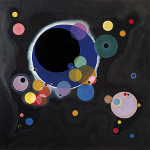(previously presented at OHBM 2019)
Segmentation of White Matter Tractograms Using Fuzzy Spatial Relations
Alessandro Delmonte 1,* , Isabelle Bloch 1 , Dominique Hasboun 2 , Corentin Mercier 1 , Johan Pallud 3 , and Pietro Gori 1
1 2 3 *
T´el´ecom ParisTech, Paris, France AP-HP, Groupe Hospitalier Piti´e-Salpˆetri`ere, Paris, France Department of Neurosurgery, Hˆopital Sainte-Anne, Paris, France, alessandro.delmonte@telecom-paristech.fr
Introduction
Clinicians or researchers often want to isolate precise white matter tracts in order to test hypotheses related to a pathology. Segmenting white matter into reproducible tracts is difficult due to the huge amount of fibers and their vague anatomical definitions. The most common method, selecting fibers passing through manually delineated ROIs, is time-consuming and poorly reproducible for tracts with convoluted trajectories [4]. Differently, manually segmented ROIs can be transferred from training images to test subjects via non-linear deformations [4]. The resulting segmentation might not be accurate when training and test images do not share the same topology (e.g. due to a tumor). Other methods rely on unsupervised clustering and use a labeled atlas [5]. With a different perspective, a near-to-English query language (WMQL) allows the user to interactively define divisional terms, relative clauses and logical operations to segment anatomical tracts [1]. However, the shape of the resulting tracts can vary among subjects since WMQL is based on simple binary relations and bounding boxes. We propose to include qualitative anatomical definitions, modeled as fuzzy sets [6], into a semi-automatic segmentation algorithm, and to automatically compute an “anatomical coherence score” for every fiber of the tractogram.
Results
The evaluation focused on the Uncinate Fasciculus. The whole-brain tractogram is initially segmented using WMQL based on an exhaustive list of spatial relations. Then, we use the DBSCAN algorithm to separate fibers into clusters. The fuzzy sets are computed from the previous list and mapped onto the fibers. The coherence score is normalized between 0 and 1. The final segmentation output is obtained setting a threshold of 0.5.

 PDF version
PDF version
